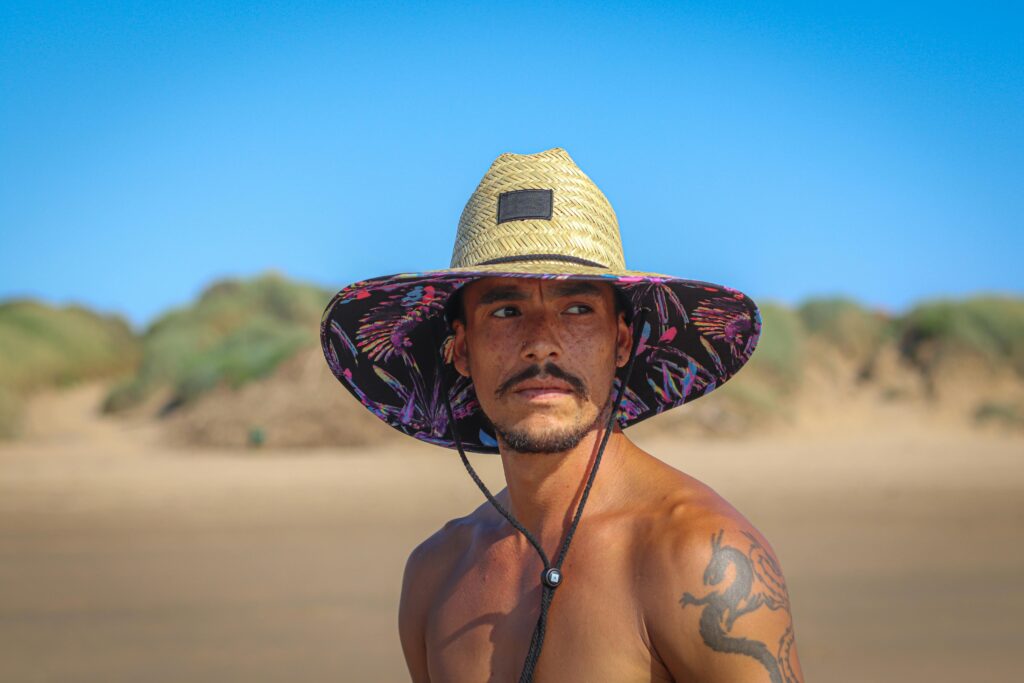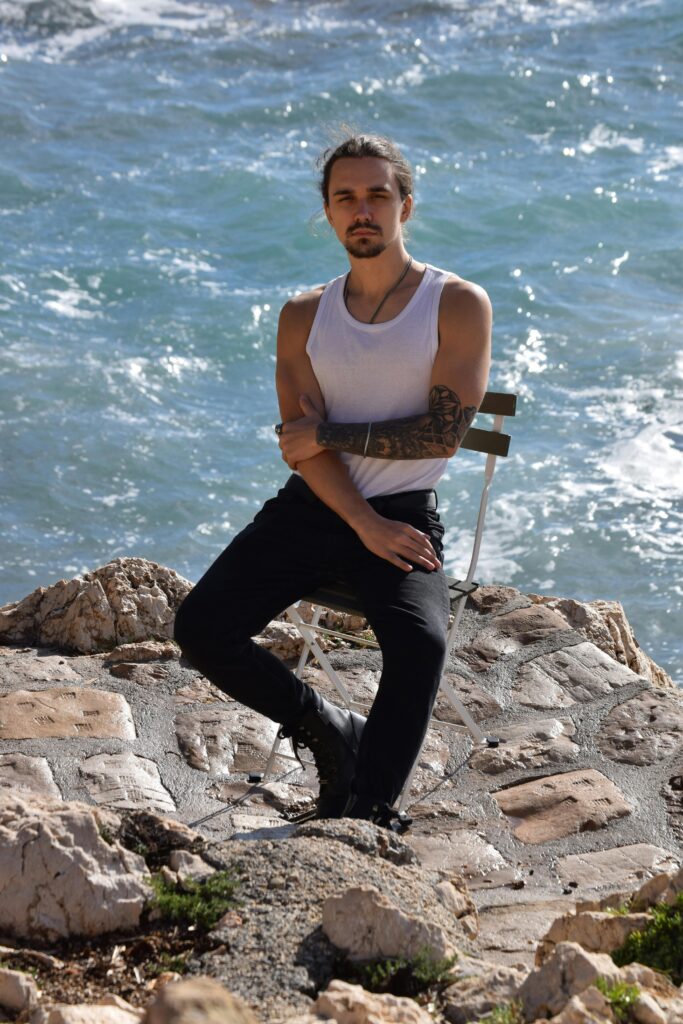The Evolution of Tattoo Art in Australia’s Indigenous Communities
October 1, 2024Tattooing is an ancient art form that has traversed cultures and epochs, adapting and evolving to reflect the identity, beliefs, and stories of the people who practice it. In Australia, tattoo art has a rich and complex history, particularly within Indigenous communities. These tattoos are not merely decorative; they carry deep cultural significance, embodying stories of connection to the land, spirituality, and identity. In this exploration of the evolution of tattoo art among Australia’s Indigenous peoples, we’ll delve into its historical roots, cultural meanings, modern adaptations, and the vibrant resurgence of this ancient practice in contemporary society.

A Historical Perspective: Ancient Traditions
To understand the evolution of tattoo art in Australia’s Indigenous communities, we must first look back to its historical roots. For thousands of years, Indigenous Australians have used body art as a means of expression, marking significant life events, rites of passage, and cultural identity. The methods and materials used varied among different groups, reflecting the diverse cultures and environments across the continent.
Traditional Techniques and Materials
Historically, tattooing among Indigenous Australians often involved the use of natural pigments derived from the land. Charcoal, ochres, and plant-based dyes were commonly employed to create intricate designs. The application process was varied; some communities utilized tools made from sharpened sticks or bone to etch designs into the skin, while others employed a method of puncturing the skin with thorny plants or even the teeth of animals.
The designs themselves held profound meaning. Patterns could represent clan affiliation, personal achievements, or spiritual beliefs. In many cases, tattoos served as visual storytelling devices, communicating narratives about ancestry and connection to the land. Each design was unique to the individual and often linked to their community’s identity.
Rites of Passage and Identity
Tattooing played a significant role in rites of passage within Indigenous cultures. For instance, young men and women might receive tattoos as they transitioned into adulthood, symbolizing their readiness to take on new responsibilities within the community. These markings were seen as a way to honor their heritage, as well as a means of reinforcing their connection to their ancestors.
Furthermore, tattoos were often used to signify an individual’s achievements or status within the community. A warrior may have had distinct markings that showcased their prowess in battle, while spiritual leaders might bear tattoos that represented their connection to the Dreamtime—a foundational aspect of Indigenous spirituality.
Cultural Significance: Beyond Aesthetic Appeal
Tattoo art among Indigenous Australians transcends mere aesthetics; it is deeply intertwined with cultural beliefs and practices. Each tattoo tells a story, conveying the wearer’s relationship with their community, the land, and the spiritual realm.
Spiritual Connections
For many Indigenous Australians, tattoos are imbued with spiritual significance. They often represent the interconnectedness of life, the land, and the cosmos. This holistic view is central to Indigenous spirituality, where everything is seen as interrelated.
Tattoos can also serve as a form of protection. Certain designs may be believed to ward off evil spirits or provide strength during challenging times. This belief underscores the importance of tattoos as both personal and communal symbols, connecting individuals to a broader spiritual context.
Preservation of Culture and Identity
As colonization spread across Australia, many Indigenous practices, including tattooing, faced significant threats. The imposition of Western norms and values led to the marginalization of Indigenous cultures and their artistic expressions. Despite these challenges, tattooing has persisted, evolving and adapting in response to changing circumstances.

In contemporary Australia, tattoos have become a powerful means of reclaiming cultural identity. Many Indigenous Australians are embracing their ancestral traditions, reviving the art of tattooing as a way to connect with their heritage. This resurgence is not merely about aesthetics; it represents a vital step toward healing and cultural revitalization.
The Modern Era: Revitalization and Innovation
In recent years, there has been a remarkable resurgence of interest in Indigenous tattoo art, both within Indigenous communities and in broader Australian society. This revival is characterized by a renewed appreciation for traditional practices, as well as innovative adaptations that resonate with contemporary audiences.
Tattoo Festivals and Community Engagement
One of the most exciting developments in the revival of Indigenous tattoo art has been the emergence of tattoo festivals and community events. These gatherings bring together artists, cultural leaders, and tattoo enthusiasts to celebrate the rich heritage of tattooing in Australia. Workshops, discussions, and live tattooing demonstrations allow attendees to engage with the art form in meaningful ways.
Events like the Tattoo and Body Art Expo showcase Indigenous artists and their work, providing a platform for cultural exchange and education. Such initiatives play a crucial role in raising awareness about the cultural significance of Indigenous tattooing and fostering a sense of pride among Indigenous Australians.
Innovative Designs and Contemporary Styles
Modern Indigenous tattoo artists are drawing inspiration from traditional designs while also incorporating contemporary styles and techniques. This fusion of old and new creates a unique artistic landscape that resonates with both Indigenous and non-Indigenous audiences.
For example, some artists may use modern tattooing equipment alongside traditional techniques, enhancing precision and detail in their designs. This allows for a broader range of expressions while still honoring the cultural significance of the motifs used.
Additionally, the themes explored in contemporary Indigenous tattoos may reflect current social and political issues, serving as a means of advocacy and storytelling. This evolution ensures that tattoo art remains relevant in today’s society while still honoring its historical roots.
The Role of Technology and Social Media
The rise of social media has played a significant role in the resurgence of Indigenous tattoo art. Platforms like Instagram have provided artists with the opportunity to showcase their work to a global audience. This exposure helps to raise awareness about Indigenous culture and the stories behind the tattoos, fostering a sense of community among artists and enthusiasts alike.
Moreover, social media allows for the sharing of knowledge and resources, enabling artists to connect with one another and learn from traditional practices. This digital network has become a powerful tool for preserving and promoting Indigenous tattoo art, ensuring its continued evolution.
Celebrating Diversity: The Rich Tapestry of Indigenous Cultures
Australia is home to a diverse array of Indigenous cultures, each with its own unique traditions and practices surrounding tattooing. While there are common themes and motifs that transcend cultural boundaries, it’s essential to recognize and celebrate the individuality of each community.
Different Regional Styles
Tattooing practices vary widely across Australia’s Indigenous communities. For instance, some groups may focus on intricate dot work, while others might employ bold lines and geometric patterns. The choice of symbols and designs can also differ significantly based on local traditions, stories, and the natural environment.

- North Queensland: In the coastal regions, tattooing practices often incorporate designs that reflect the marine environment. Motifs such as fish, shells, and ocean waves may be featured prominently, symbolizing the connection between the people and the sea.
- Central Australia: In the desert regions, tattoos may depict native flora and fauna, as well as designs inspired by the vast landscapes. These tattoos can serve as a tribute to the land and its significance to the community’s identity.
- Western Australia: Here, some Indigenous cultures have developed distinctive tattooing styles characterized by intricate patterns that echo the textures of the land. These designs often reflect stories passed down through generations.
The Importance of Storytelling
At the heart of Indigenous tattoo art is storytelling. Each tattoo carries a narrative that reflects the wearer’s journey, experiences, and cultural heritage. Tattoo artists often work closely with their clients to understand the stories they wish to convey, ensuring that each design is imbued with personal significance.
This emphasis on storytelling enriches the tattooing process, transforming it into a collaborative experience. The artist and the wearer engage in a dialogue that honors the past while looking toward the future. This connection underscores the profound nature of tattoo art as a vehicle for self-expression and cultural continuity.
Conclusion: A Living Tradition
The evolution of tattoo art in Australia’s Indigenous communities is a testament to the resilience and adaptability of cultural practices. From ancient traditions to contemporary innovations, tattooing continues to play a vital role in expressing identity, spirituality, and connection to the land.
As more Indigenous Australians reclaim their cultural heritage through tattoo art, this ancient practice is being revitalized in meaningful ways. By celebrating the stories, beliefs, and values embedded in tattoo designs, we honor the diversity of Indigenous cultures and their enduring legacies.
If you’re inspired to explore the world of tattoo art, whether it’s through a personal journey or simply appreciating the beauty of these designs, consider connecting with Tattoos Down Under. With skilled artists who understand the cultural significance of tattoos, you can embark on a journey that honors the rich history and evolution of tattoo art in Australia. Embrace the stories, the art, and the spirit of connection that tattoos represent, and let them serve as a powerful expression of identity and belonging.




